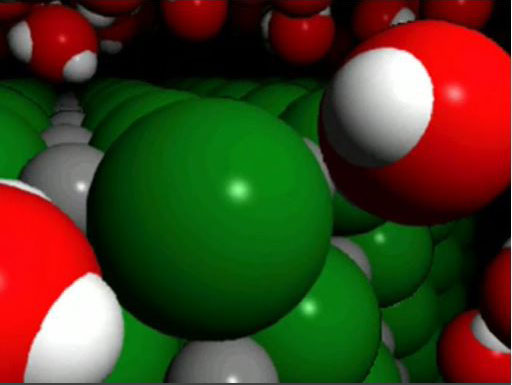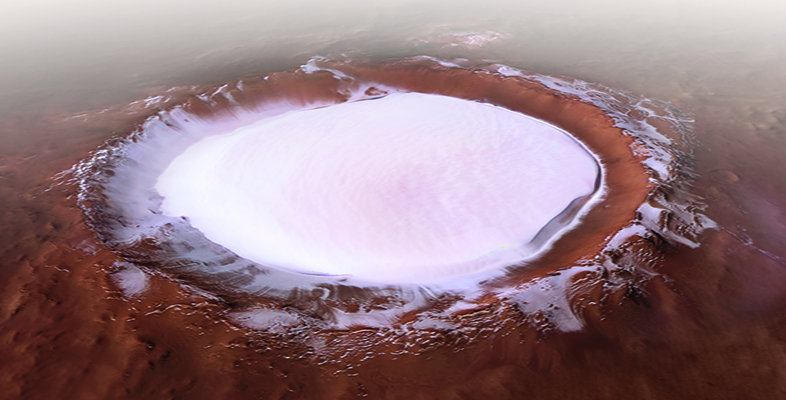Water as a solvent
As mentioned earlier, water is a solvent. A solvent is a liquid that is able to dissolve substances, and water is often described as ‘the universal solvent’ because of its ability to dissolve so many substances - solids, liquids and gases.
When solids dissolve in water, they dissociate (separate) into their constituent elements or ions. Take sodium chloride (you will know this as table salt) as an example. With the molecular formula NaCl, it contains ions of sodium that have a positive charge (Na+) and chloride ions that have a negative charge (Cl−). Solid NaCl occurs as regularly shaped crystals, in which the sodium and chloride ions are held together by the electrical attraction between these positive and negative charges. With this in mind, watch Video 2 to see what happens when sodium chloride is dissolved in water.

Transcript: Video 2 when sodium chloride is dissolved in water.
You have seen from Video 2 that the slightly positive part of the polar water molecule is attracted to the negative chloride ion, and the slightly negative end is attracted to the positive sodium ion. You will also remember that water molecules are attracted to one another by hydrogen bonds. Multiple hydrogen bonds together exert a considerable force that can exceed the strength of the bonds between sodium and chlorine in sodium chloride. This separates them, dissolving the crystal into the water.
This dissociation is also the reason why even tap water contains numerous dissolved ions, such as magnesium, potassium, sodium, calcium, chloride and fluoride. These ions come from either the natural environment, particularly from interactions (for example, chemical weathering) between water and the rocks over or through which it flows, or they have been added to the water to ensure it is safe to drink. This means that water can contain ions that can be transported and made available for life to utilise.
Importantly, this also means that water can carry dissolved substances around our bodies (and all living organisms). For instance, they can provide nourishment or remove unwanted waste, within and outside cells, performing essential functions to maintain life.
There are many reactions that involve water and its solvent properties – too numerous to mention. However, it is important to note that some may result in conditions that may not be hospitable to life. For example, when carbon dioxide (CO2) dissolves in water, it forms carbonic acid (H2CO3). This carbonic acid dissociates to release one of its hydrogens (H+), which attaches itself to a water molecule to form a ‘hydronium ion’ (H3O+).
-
What property of a water molecule might attract a hydrogen ion (H+)?
-
A water molecule is polar and has a slightly negative charge near its oxygen atom, which will attract the positive hydrogen ion.
The more hydronium ions present, the more acidic the water. This is measured using the pH scale. If the pH of a solution is less than 7, it is classed as acidic. If the pH is greater than 7, it is classed as alkaline. Pure water has a pH of 7 and is neutral. Biological processes tend to occur towards the middle range of the pH scale, although there are organisms that can survive extremes of acidity or alkalinity.
